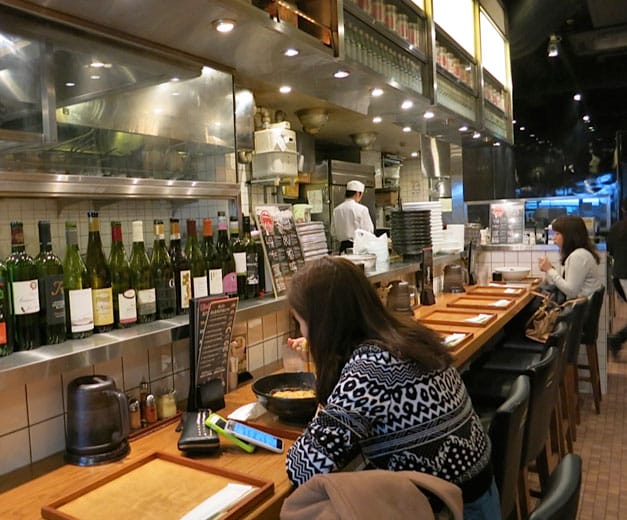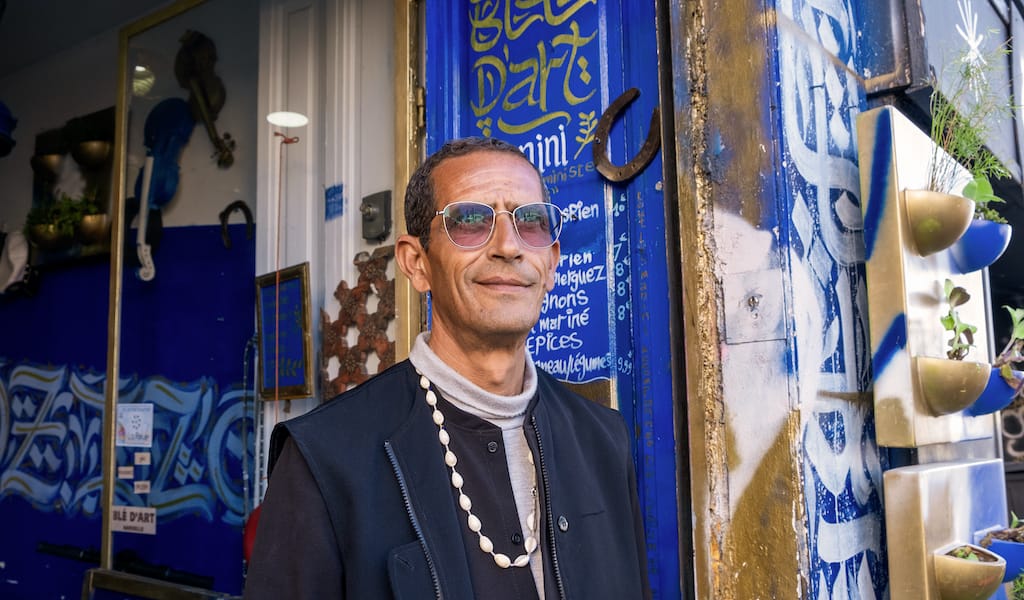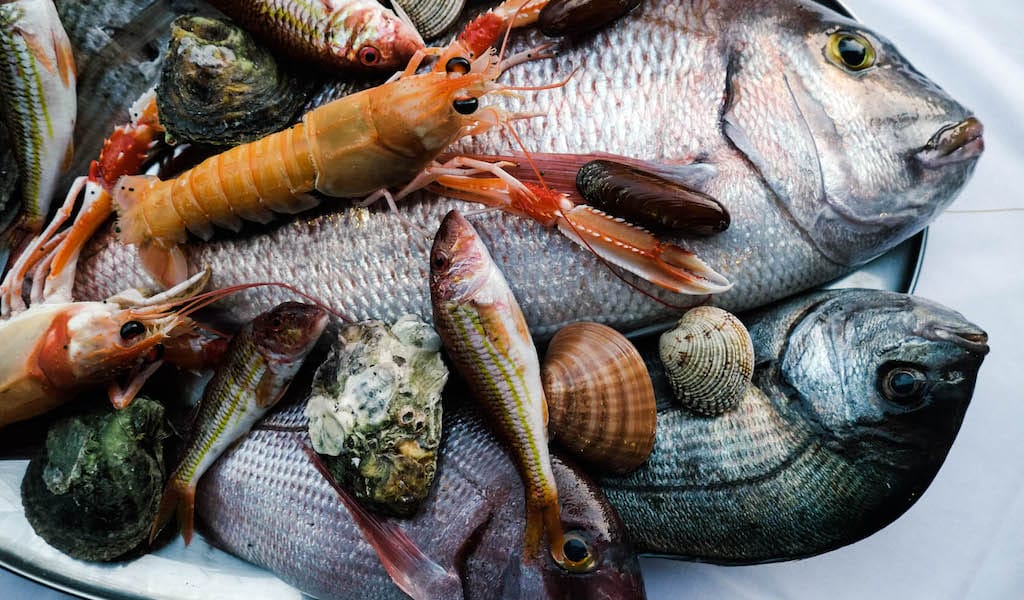If there is a symbol of the adoring relationship that Greeks have with lamb, it is none other than the lamb on a spit that most Greeks in mainland Greece eat as a specialty on Easter Sunday. Greeks eat beef or pork at least once per week; lamb, however, is not an everyday thing but a treat, something more than just meat.
The film My Big Fat Greek Wedding may be a never-ending fount of stereotypes, but it does get it exactly right when it comes to how Greeks view lamb. When Aunt Voula finds out that the groom Ian is a vegetarian, she says, “What do you mean, you don’t eat meat? That’s okay, that’s okay, I make lamb.”
If lamb is a beyond-meat Greek treat, lamb chops, called paidakia, are a delicacy. Paidakia are marinated with oregano, lemon juice, herbs, thyme and pepper and then grilled at a high temperature until they are well done (no pink meat allowed), usually over a charcoal fire. They are generally accompanied by patates tiganites (the Greek version of French fries), a combo that’s as irresistible as it is cholesterol-raising.
Lamb chops are not to be found everywhere. Traditionally, there are certain areas near Athens – such as Kalyvia (33 km from Athens), Varibobi or even Stamata – that specialize in lamb chops, but going there is an excursion. Luckily, in central Athens there are three good places for paidakia.
Located in the popular neighborhood of Pagrati, near the emblematic statue of American President Harry S. Truman that was erected in the ’60s and has come to define the area, Karavitis is the stuff of legend, bearing the trademark of the Athenian old-fashioned tavern: enormous wine barrels on the walls. In summer, diners – from politicians in suits (the Conservative party headquarters used to be right around the corner) to working-class families and other locals – sit in the whitewashed garden. An old man who is extremely out of tune sings and plays the guitar to old Greek classics, sometimes in a corner and sometimes while going from table to table. As at many places in Greece, the tree trunks are whitewashed to fend off insects, and there are enormous potted plants, creating an image of a picturesque and surreal Garden of Earthly Delights.
The service at Karavitis is speedy and organized and the food is typical Greek taverna fare: saganaki (fried cheese), wild boiled greens and Greek salad, all well-executed. The high point is the meat and the specialty is of course the paidakia, which is ordered by the kilo (luckily you can always order just half a kilo). Served piping hot, the lamb chops are extremely succulent and have an extra strong charcoal flavor. Locals also swear by the biftekia, grilled ground beef patties filled with cheese. The cheese is a sort of ’80s touch and the biftekia are slightly on the heavy side. Karavitis’s bread is a mix of sourdough and classic white bread and the house wine is also very decent for the price.
Doureios Ippos (“Trojan horse”) in Exarchia also deserves a mention. This family-run place has an atmospheric terrace where students and intellectuals have heated political arguments about the future of capitalism under a pergola covered in vines. Most of the food is served on hard plastic dishes and the house wine is nothing to write home about, but the meat is grilled to perfection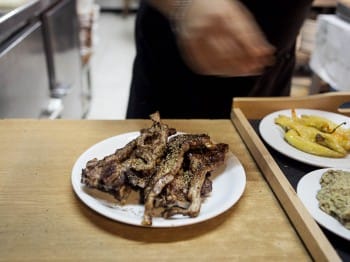 on an old-fashioned grill spit. From sausages to chicken thighs, the meat is juicy and flavorful, including the awesome lamb chops.
on an old-fashioned grill spit. From sausages to chicken thighs, the meat is juicy and flavorful, including the awesome lamb chops.
But our absolute favorite paidakia place in downtown Athens, near where Thiseio meets Petralona, is To Steki tou Ilia. Unlike touristy Plaka, and despite its proximity to sites such as the Temple of Hephaestus, Thiseio has maintained its residential character and is still one of the prettiest neighborhoods in Athens thanks to its neoclassical buildings and pedestrianized streets. To Steki tou Ilia is located on one such street, right next to one of Athens’ best art galleries (The Bernier Eliades Gallery), although a new restaurant extension recently opened a bit further down the road to accommodate the locals’ ever-present hunger for paidakia. Harried waiters bring platters full of thinly cut lamb chops to the tables lined up outside on the cobblestone street. What sets these chops apart is that they are extremely thin but full of fat and flavor. The taste is heavy and smoky, while the texture is juicy and sloppy at the same time. In addition to the lamb chops and the other usual suspects, the venue also serves sykotaria, fried lamb liver, a rare delicacy in Athens.
A final tip: Greeks eat paidakia with their hands. You can always try using a knife and fork but it will be a waste of both your time and of good meat. Plus, there is something delightfully primeval about sticking your teeth into a well-done, charcoal-flavored lamb chop. Perhaps that’s part of what makes eating one such a treat.
 March 13, 2015 Spajiro
March 13, 2015 Spajiro
The phrase “Japanese noodles” brings to mind so many things: soba, udon, ramen, […] Posted in Tokyo June 8, 2023 Blé d’Art: Spellbound by Music and Merguez
June 8, 2023 Blé d’Art: Spellbound by Music and Merguez
In the first book of his Marseille noir trilogy Total Chaos, Jean-Claude Izzo describes […] Posted in Marseille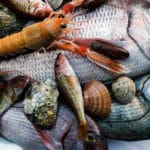 November 11, 2013 Taxidevontas
November 11, 2013 Taxidevontas
In Piraeus there is a tacit agreement among locals to keep treasured taverns and […] Posted in Athens
Published on September 28, 2012
Related stories
March 13, 2015
TokyoThe phrase “Japanese noodles” brings to mind so many things: soba, udon, ramen, shirataki, somen – all with their variety of width, length and material. Some are eaten dipped in various sauces, while others are served swimming in broth. Japanese noodles are included in stews and with combinations of ingredients as well. They are eaten…
June 8, 2023
MarseilleIn the first book of his Marseille noir trilogy Total Chaos, Jean-Claude Izzo describes his hometown: “Marseille isn't a city for tourists. There's nothing to see. Its beauty can't be photographed. It can only be shared. It's a place where you have to take sides, be passionately for or against. Only then can you see…
November 11, 2013
AthensIn Piraeus there is a tacit agreement among locals to keep treasured taverns and restaurants hidden, lest they be overrun by the tourists arriving on the cruise ships that dock in town. This is particularly true of Keratsini, a neighborhood on the outskirts of the port city. In 1922, Keratsini became home to Greek refugees…












































